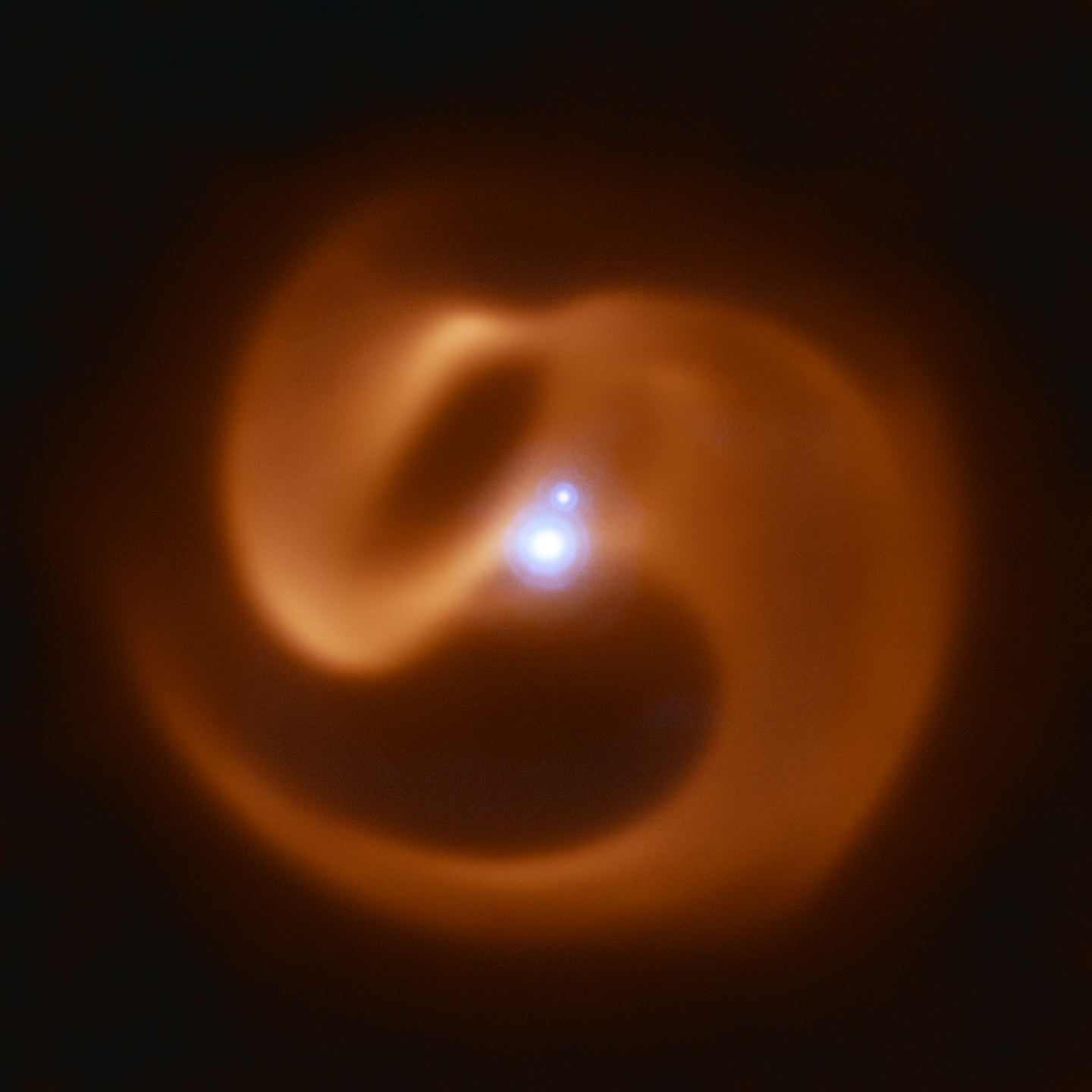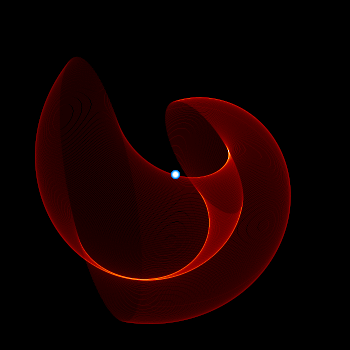
This image is a composite of data collected from the near-infrared camera (NACO) together with longer wavelength data in the thermal infrared (from the VISIR instrument). Both instruments are on the European Southern Observatory's VLT telescopes, Mt Paranal, Chile. The mulit-colour collage renders the central stars of the system in blue-white at the core, with the fainter companion to the North and a bit West of the heart of the system (actually, another binary so close that it can't be resolved here). Surrounding this triple star is the extended dust plume, about 12 arcseconds across, rendered in orange-red. The thermal infrared radiation coming from this elegantly coiled tail is believed to arise from a vast plume of warm dust streaming out into space.
Composite images Near and Mid Infrared:
Fullsize Original 12Mb file
Large JPG 340Kb file
Screen JPG 130Kb file

